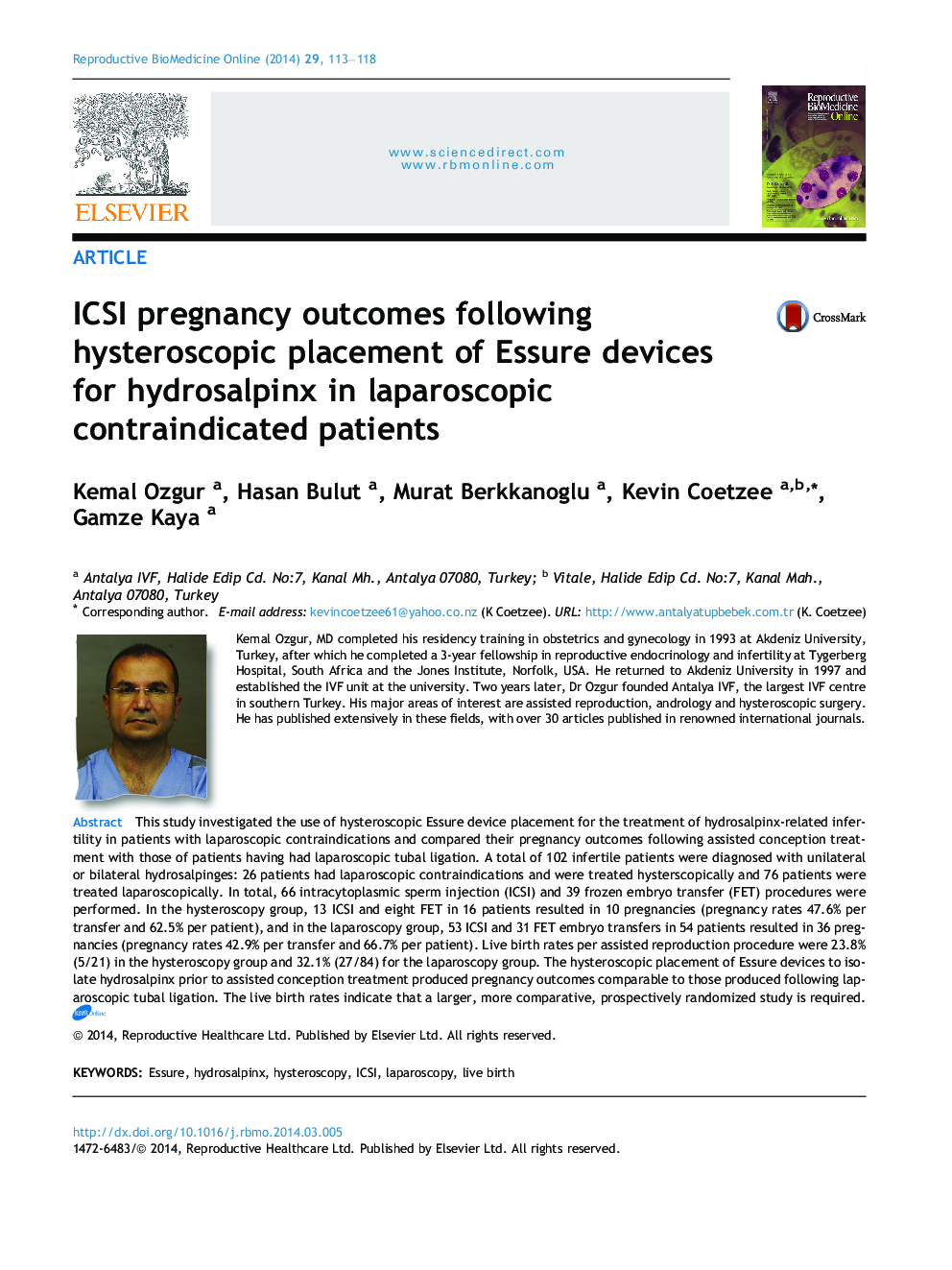| کد مقاله | کد نشریه | سال انتشار | مقاله انگلیسی | نسخه تمام متن |
|---|---|---|---|---|
| 3970147 | 1256702 | 2014 | 6 صفحه PDF | دانلود رایگان |

This study investigated the use of hysteroscopic Essure device placement for the treatment of hydrosalpinx-related infertility in patients with laparoscopic contraindications and compared their pregnancy outcomes following assisted conception treatment with those of patients having had laparoscopic tubal ligation. A total of 102 infertile patients were diagnosed with unilateral or bilateral hydrosalpinges: 26 patients had laparoscopic contraindications and were treated hysterscopically and 76 patients were treated laparoscopically. In total, 66 intracytoplasmic sperm injection (ICSI) and 39 frozen embryo transfer (FET) procedures were performed. In the hysteroscopy group, 13 ICSI and eight FET in 16 patients resulted in 10 pregnancies (pregnancy rates 47.6% per transfer and 62.5% per patient), and in the laparoscopy group, 53 ICSI and 31 FET embryo transfers in 54 patients resulted in 36 pregnancies (pregnancy rates 42.9% per transfer and 66.7% per patient). Live birth rates per assisted reproduction procedure were 23.8% (5/21) in the hysteroscopy group and 32.1% (27/84) for the laparoscopy group. The hysteroscopic placement of Essure devices to isolate hydrosalpinx prior to assisted conception treatment produced pregnancy outcomes comparable to those produced following laparoscopic tubal ligation. The live birth rates indicate that a larger, more comparative, prospectively randomized study is required.Infertile patients with tubal disease require surgical treatment before they can continue with fertility treatment. There are two main surgical methods that can be used, hysteroscopic and laparoscopic, the latter being the standard surgical method. However, some patients have disease that makes the use of laparoscopy inappropriate. For these patients the placement of Essure® devices by hysteroscopic surgery maybe the most suitable treatment method. One hundred and two patients were diagnosed with unilateral or bilateral hydrosalpinges – tubal disease. Twenty six patients had to have hysterscopic surgery and 76 patients had laparoscopic surgery. After their tubal surgery some patients continued to have fertility treatment, 66 ICSI and 39 frozen embryo transfers (FET) were performed. Thirteen ICSI and 8 FET embryo transfers in 16 patients from the hysteroscopy group resulted in 10 pregnancies, a 47.6% per transfer and 62.5% per patient pregnancy rate. Fifty three ICSI and 31 FET embryo transfers in 54 patients from the laparoscopic group resulted in 36 pregnancies, a 42.9% per transfer and 66.7% per patient rate. Live birth rates per ART procedure were 23.8% (5/21) in the hysteroscopic group compared with 32.1% (27/84) for the laparoscopic group. The hysteroscopic placement of Essure® devices for tubal disease prior to fertility treatments resulted in pregnancy outcomes that were comparable to the outcomes obtained following laparoscopic surgery.
Journal: Reproductive BioMedicine Online - Volume 29, Issue 1, July 2014, Pages 113–118